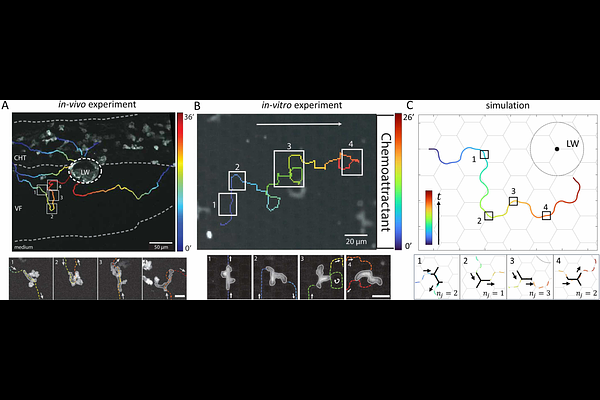Chemotaxis of branched cells in complex environments

Chemotaxis of branched cells in complex environments
Liu, J.; Ron, J. E.; Rinaldi, G.; Williantarra, I.; Georgantzoglou, A.; de Vries, I.; Sixt, M.; Sarris, M.; Gov, N.
AbstractCell migration in vivo is often guided by chemical signals. Such chemotaxis, such as performed by immune cells migrating to a wound site, is complicated by the complex geometry inside living tissues. In this study, we extend our theoretical model of branched-cell migration on a network by introducing chemokine sources to explore the cellular response. The model predicts a speed-accuracy tradeoff, whereby slow cells are significantly more accurate and able to follow efficiently a weak chemoattractant signal. We then compare the model\'s predictions with experimental observations of neutrophils migrating to the site of laser-inflicted wound in a zebrafish larva fin, and migrating in-vitro inside a regular lattice of pillars. We find that the model captures the details of the sub-cellular response to the chemokine gradient, as well as the large-scale migration response. This comparison suggests that the neutrophils behave as fast cells, compromising their chemotaxis accuracy, which explains the functionality of these immune cells.